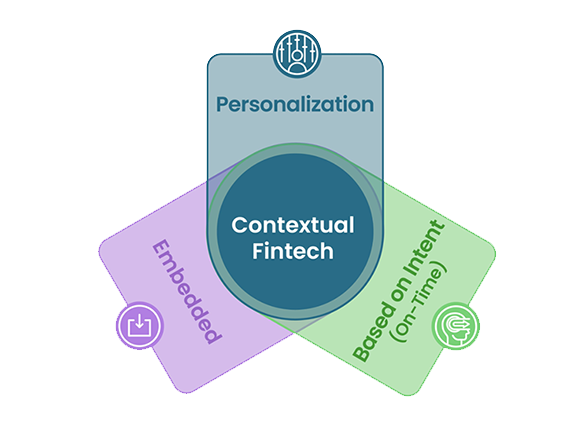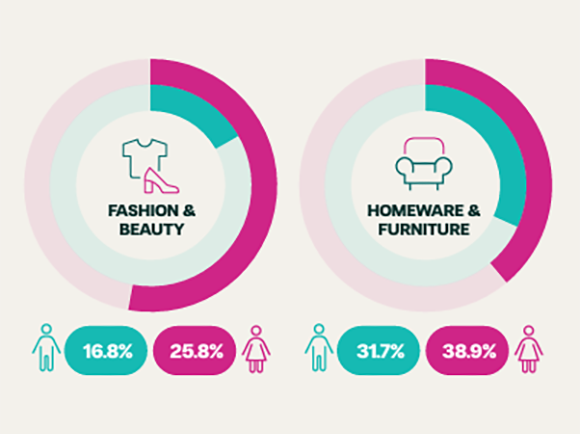Mythbusting common stereotypes around checkout finance
Written by Marketing Team

Checkout finance (which includes Buy Now, Pay Later) sometimes gets a bad rap. There are a lot of myths and misconceptions that give the impression this form of payment is taking advantage of consumers, or that it is being used in the wrong way.
However, recent research by Divido has shown that many of these accusations are unfounded. In fact, the picture we’ve revealed in our new consumer sentiment report is that checkout finance is being used by consumers in a way that supports their lives and lifestyles.
In this article, we’ll go over a few misconceptions that have plagued the industry, and reveal the data that paints a completely different picture.
1. Shoppers are buying frivolous things with Buy Now, Pay Later
One popular misconception about checkout finance, and Buy Now, Pay Later in particular, is that it is being used almost exclusively by people shopping for things they don’t need. Fast fashion, for instance, is often portrayed as the poster child for BNPL – as in this article from Dazed, or this one in The Sun.
The proof is that the majority of low-cost, fast fashion retailers have now partnered with Buy Now, Pay Later providers like Klarna and PayPal to offer Pay in 3 or Pay in 4 products at their checkouts. But look beyond the fast-fashion sector, and you’ll see that the checkout finance industry is far more diverse than people give it credit for.
Our survey revealed that, in the UK, fashion and clothing is indeed the most popular category for checkout finance shopping. 38% of people who have used checkout finance have used it at least once to pay for fashion and beauty items.
But this doesn’t paint the full picture. For instance, while most of those shoppers claim to have spent less than £250 on their purchases, 43% said they have spent more than £250, with 16% having spent more than £500.

This shows that, even if clothing is a popular type of purchase, many of the people who use checkout finance use it to purchase larger baskets and higher-value items. There is a big difference, after all, between using Buy Now, Pay Later to pay for this season’s tops and socks, and a basket full of clothes intended to be worn for a whole year, or an expensive winter coat.
Furthermore, while fashion and beauty is the top category, it is far from the only popular sector. 36% of shoppers say they have bought furniture and homeware with checkout finance, while 30% have bought electronics and 22% used it to pay for white goods. Many people who have shopped for clothes have also bought items in other categories, showing that it is not just clothing that accounts for the majority of sales.

And among those who have bought fashion and beauty products through checkout finance, 80% agreed that checkout finance was a great way to help them manage their finances. These shoppers are not just using finance because it’s available and easy – they are using it as a way to support their financial wellbeing.
All in all, while some may have the impression Buy Now, Pay Later is only being used to pay for cheap clothes, creating unnecessary debt, the reality is that shoppers are using checkout finance savvily in this sector.
2. Shoppers don’t trust checkout finance
It’s easy to see, based on headlines in the news, why people might be sceptical about shopping with checkout finance. In 2022, Citizens Advice called attention to the fact that two-fifths of people had had to borrow more money to pay off their BNPL loans. Barclays and StepChange released a joint statement in the same year, warning that almost one million people could fall into an unmanageable debt as a result of Buy Now, Pay Later spending.
With so many headlines like these going around, it’s little wonder YouGov found in an international survey that less than half of consumers (43%) said they trusted Buy Now, Pay Later.
But our survey told a different story. When asked whether they agree that checkout finance could help them to manage their finances, 58% of people told us yes.
And, when asked if they felt comfortable paying with checkout finance, 55% agreed.

These people tended to be younger, female and in full-time employment. With stable salaries to help them manage their finances and a strong grasp of their personal finances, we believe these consumers trust checkout finance because they see it as a useful tool to help them manage their spending, rather than as an incentive to get into unmanageable levels of debt.
Of the people who said that they believe checkout finance is useful to help them manage their finances, 42% are planning to use this method of payment in the next 12 months, while 51% said they would be open to considering. What is also telling is that this group of people are more likely to be high-spenders – they are slightly less likely to have spent under £500, and slightly more likely to have spent over £500.
This demographic is also highly likely to be employed full-time (49%) or part-time (18%), showing that they are more likely to be financially secure in other avenues of life.
While we at Divido do agree that more needs to be done to regulate the sector, we believe that this should be done with the consumer’s benefits in mind. Stifling the checkout finance industry would take away the choice consumers have when it comes to spending. It is important to make sure families can access financial resources in a safe, secure and positive manner.
3. Checkout finance is only popular with Gen Z
It seems wherever you look, newspapers seem to be reporting that Gen Z accounts for the overwhelming majority of Buy Now, Pay Later and checkout finance users. ‘Nearly half of Gen Z and millennials “rely” on Buy Now Pay Later’, claimed one source; ‘Gen Z is “flocking” to BNPL’, claimed another.
There is a dark side to this, too – Citizens Advice reported that a quarter of young people were getting into debt as a result of shopping on finance. The Times warned that excessive use and abuse of BNPL could prevent young people from getting on the housing ladder. Even Elle reported that 43% of Gen Z shoppers have missed a repayment with Buy Now, Pay Later.
The ultimate sense one gets is that young people, especially Gen Zs (people roughly below the age of 25), are not only the primary users of checkout finance, but also the most likely to suffer the consequences of missed payments and damaged credit scores.
Our survey told a different story. In fact, people aged up to 24 years old accounted for only 13% of total checkout finance users. Although this demographic was more likely than average to have used checkout finance (73% of people in this age group had used it, compared to an average of 57%), the same was true of all age groups up to 54 years old. In other words, under-54s are more likely than average to use checkout finance, while those 55 and over are considerably less likely than average.
In fact, the largest proportion of checkout finance users were millennials aged 25–34 – 76% of respondents in this age group had used finance, meaning they made up 22% of the total.
And while young people may often be painted as victims, they were significantly more likely to be pro-BNPL. 58% of people in this age group said they would use it to make a high-value transaction, while 70% agreed it could help them to manage their finances. 65% said they felt comfortable paying with checkout finance.
4. Checkout finance is mainly used by people on low incomes
Another demographic Buy Now, Pay Later is supposedly linked to are low-earners. People with less money coming in are said to be more at risk, while activist Aja Barber told aAh! Magazine: “[BNPL companies] exploit the working class, dangling the opportunity to ‘keep up with the Joneses’ by buying the shiny new clothes that influencers are wearing now and worrying about the debt later.”
There is some truth in the fact that people on lower incomes seem more likely to use checkout finance and Buy Now, Pay Later. 52% of checkout finance users who completed our survey told us their household incomes were lower than £30,000 per year.
But almost half of checkout finance users have relatively high household incomes. The remaining 48% earn more than £30,000 per year, and 14% have household incomes higher than £60,000 per year.
There seems to be very little difference in the spending behaviour of low- and high-earners. Both seem to agree that checkout finance can help them to manage their finances better, while high-earners prefer credit cards slightly more than average and are more likely to say they will not use checkout finance this year. Both also seem to prefer shopping for fashion and beauty items, and there is very little difference in the proportions of both demographics who say they would use checkout finance to pay for everyday expenses like food shopping and household bills.
All in all, it seems that people with lower household incomes are just as financially savvy as high-earners. The media ought to give people on lower incomes more credit – if they are using checkout finance as a budgeting tool, and spending within their means, they should be supported in doing so, rather than told about all the risks they, specifically, face.
The bottom line
There are myriad myths surrounding Buy Now, Pay Later and checkout finance. The reasons for this are obvious – as a sector that has managed to avoid regulation up till now, the risk of checkout finance causing financial harm has seemed particularly high, especially given the number of providers who are willing to lend without stringent affordability checks.
However, all that is set to change soon. In the meantime, we can at least take solace in the fact that the data seem to support that the majority of checkout finance users are using this form of credit in a safe, sustainable and confident manner.
Discover more insights about how customers are using Buy Now, Pay Later
Divido’s latest whitepaper details how people are using checkout finance, what they are buying, and how they feel about this increasingly popular form of payment, based on our own survey of the British public. Download it free today to reveal more incredible insights.

You might also
be interested in
Keen to know more?








